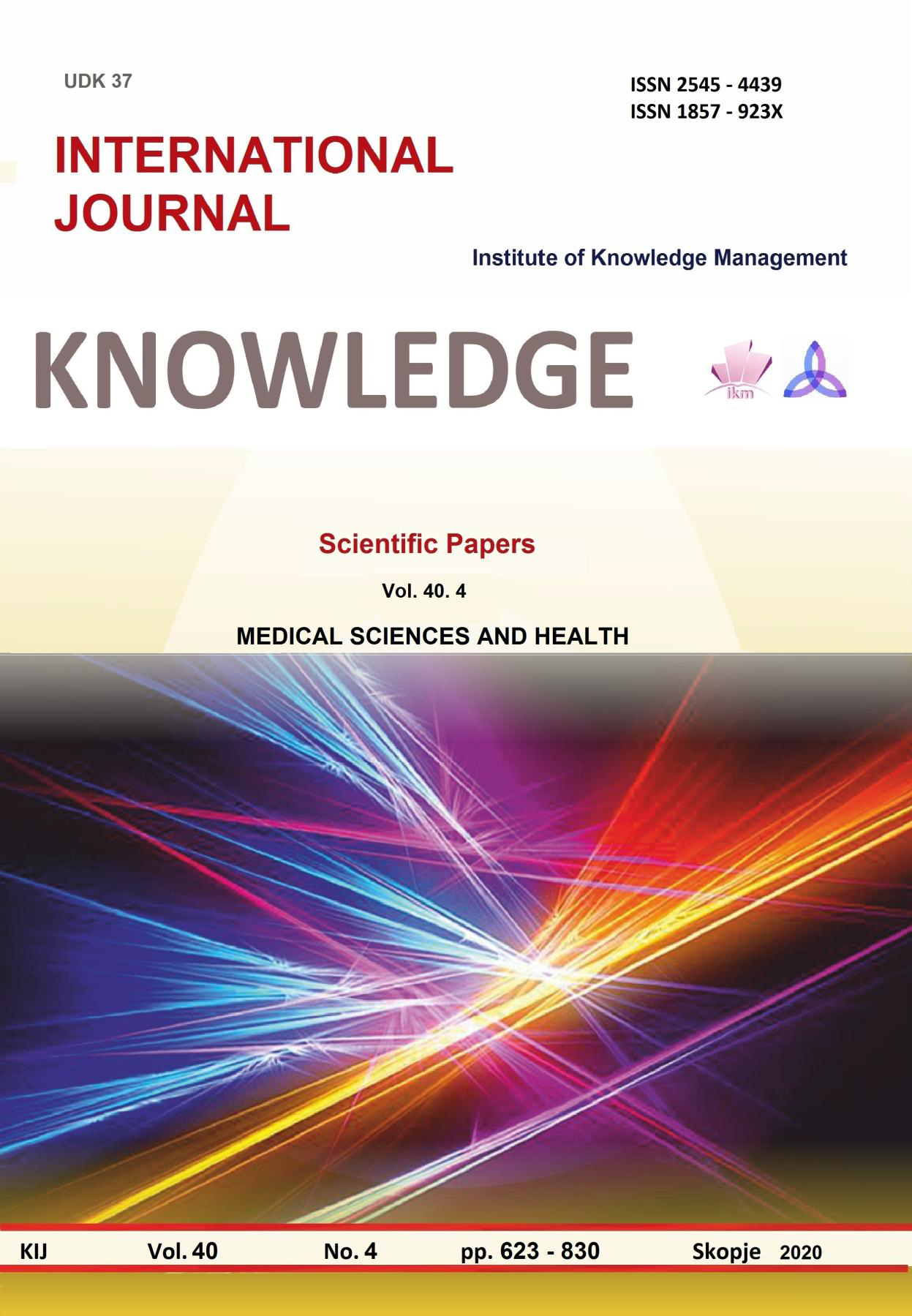INFLUENCE OF PREBIOTICS ON THE ANTIOXIDANT AND THE LIPID PROFILE OF PATIENTS WITH TYPE I DIABETES MELLITUS
INFLUENCE OF PREBIOTICS ON THE ANTIOXIDANT AND THE LIPID PROFILE OF PATIENTS WITH TYPE I DIABETES MELLITUS
Author(s): Mariya Choneva, Ivica Dimov, Krasimir Boyanov, Iliyan Dimitrov, Tatyana Vlaykova, Anelia BivolarskaSubject(s): Social Sciences
Published by: Scientific Institute of Management and Knowledge
Keywords: type I diabetes mellitus; intestinal microflora; prebiotics; oligosaccharides; microbiota.
Summary/Abstract: Type I diabetes mellitus is an autoimmune disease, in which the immune system attacks the β-cells of the islets of Langerhans in the pancreas, which produce insulin. Some of the main complications of this disease are the micro-and the macrovascular damages with main consequence: cardiovascular diseases, which appear to be the leading cause of mortality in this widespread, socially significant disease. The development of type I diabetes is affected by non-genetic factors such as the development of the optimal microbiome in early life, which programs the immune system. Patients have different intestinal microflora in comparison to healthy individuals as well as alterations in the intestinal permeability, inflammation andinsulin resistance. Prebiotics represent a selective fermentative ingredient of food, which allows specific changes in both the composition and in the activity of the intestinal microflora of the person and thus improves his health and well-being. Human milk oligosaccharides, present in breast milk, are modulators of the microbiota and are known for directly regulating the immune response. They are vital for the protection of children at risk of developing type I diabetes by assisting the development of the immune and intestinal microbiota in early life. Soybean oligosaccharides are potential prebiotics, which improve the immune function. After 22 days of administration of 4 g/kg weight soybean oligosaccharides, they significantly affect the proliferation of bifidobacteria and lactic acid bacteria compared to the control group. Probiotic microorganisms show favorable interrelations with their host by influencing the intestinal cell proliferation and differentiation and the immune system, and they counteract pathogenic microorganisms. The supposed direct effects of oligosaccharides on pathogenic flora infections include mimicry of receptors and influence on their virulence. The regulation of virulent genes through the presence of oligosaccharides and polysaccharides in the nutrient medium has been described for a number of pathogenic bacteria. The indirect effects of prebiotics on the immune system can result from the stimulation of the growth of probiotic bacteria and the stimulation of the production of shortchain fatty acids. The increase of the number of probiotic bacteria stimulates the immune system and leads to protection against pathogenic invasion. Oxidative stress, which is an important component of a number of diseases, is characterized by an imbalance in the level of oxidants and antioxidants in favor of the oxidants. It can lead to irreversible impairment of lipids, nucleic acids and proteins. It has been proved that the administration of synbiotics has a positive effect on the parameters of the oxidative stress. The elevated level of serum cholesterol is recognized as a risk factor for the development of atherosclerosis, cardiovascular diseases and hypertension. It has been proved that there are significant changes in the lipid profile of patients, treated with galactooligosaccharides. Prebiotics are a cheap and a low risk supplement, which can be used to favorably influence type I diabetes mellitus. They can also improve the glycemic control through changes in the intestinal microflora, the permeability of the intestines and inflammation. The purpose of this review is for the influence of new prebiotics (galactooligosaccharides and xylooligosaccharides) on the lipid and antioxidant profile of patients with type I diabetes mellitus to be studied.
Journal: Knowledge - International Journal
- Issue Year: 40/2020
- Issue No: 4
- Page Range: 735 - 740
- Page Count: 6
- Language: English

